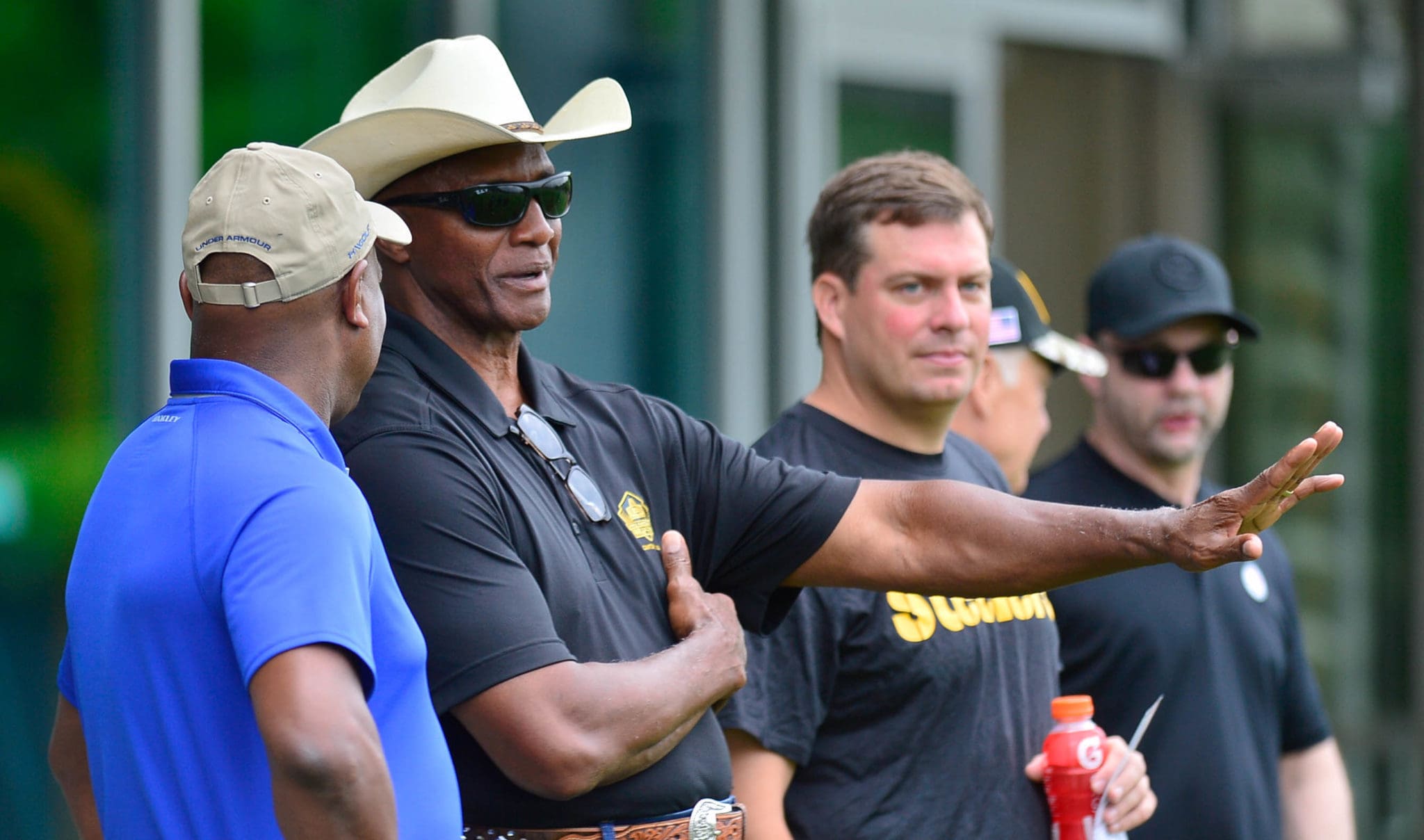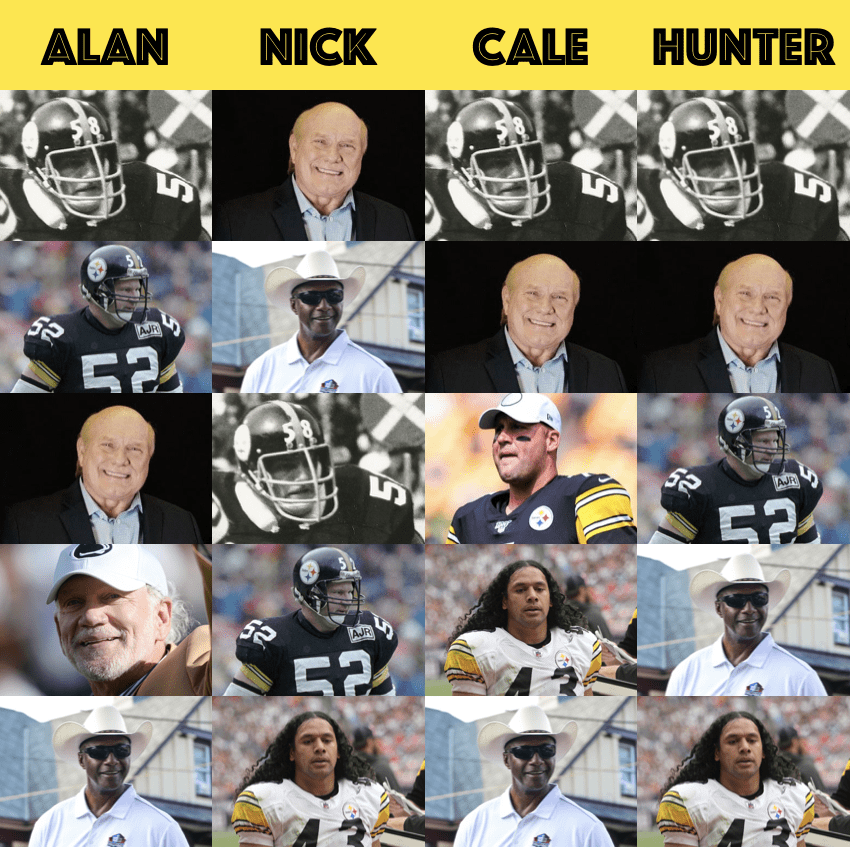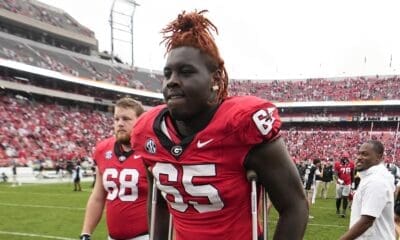Steelers News
Power Rankings: Which Steelers Jersey Number Should Be Retired Next?

With Franco Harris getting his uniform number retired later this season, will that open the floodgate from what has been historically the slowest of trickles?
The Steelers don’t retire many jerseys, with Harris joining Ernie Stautner (70) and Joe Greene (75) as the third in franchise history. President Art Rooney II said on Tuesday that the team is unlikely to move quickly on more retirements, but he left the door open for more Steelers players to follow Harris and Greene into history.
Alan Saunders, Nick Farabaugh, Cale Berger and Hunter Homistek broke down the Steelers players that they think are most worthy of having their uniform numbers permanently retired. Our power rankings were compiled with each first-place vote getting 10 points and so on and so forth.
What do you think? Let us know in the comments.

JACK LAMBERT
Jack Lambert nearly swept the first-place votes here –– and for good reason. It’s not just that he is arguably the best linebacker in Steelers history (Jack Ham might like a word there). It’s not just that he played the most iconic position on the most iconic Steelers defenses of all time. It’s not just that he looked like “Count Dracula in cleats” and inspired fear among opposing offenses.
It’s all of it.
Lambert unquestionably brought a Hall of Fame skillset to the table as a middle linebacker –– but his intangibles launched him to legendary status. His scowl, his ferocity, and his ability to set the tone for a game may never be seen again for a player wearing the black and gold. The number 58 is Jack Lambert. And Jack Lambert is one of a kind.
TERRY BRADSHAW
Terry Bradshaw redefined what success looks like at the game’s most important position for the Pittsburgh Steelers. Early in his career, Bradshaw had success while operating largely in a rushing attack, before being allowed to spread his wings later in the 1970s, culminating with two Super Bowl MVP awards, the only Steelers player to win more than one and the only Steelers quarterback to win one. Only Tom Brady has won the NFL’s biggest game more than Bradshaw. With good reason, every Steelers quarterback to ever follow will be compared to him.
MEL BLOUNT
Mel Blount is the best defensive back in Steelers’ history. That is saying something, but this is a player who legitimately changed the game. The Mel Blount Rule exists because Blount was such a dominant force. Even after those changes prohibiting downfield contact, Blount’s talent still allowed him to thrive. In a new environment, Blount came out better than ever at the height of his career. Largely speaking, the game is so heavily skewed towards passing thanks to the dominance of Blount. He was as critical a force as any as to why the Steelers won four Super Bowls in the 1970s. Without him there, the Steelers may very well not have done what they did. For how he changed the game and to acknowledge the legend he is, Blount’s number retirement makes plenty of sense.
MIKE WEBSTER
“Iron” Mike Webster was probably the best center that ever lived. Never the biggest or fastest player at his position, Webster won with an intense drive and work ethic and became notorious for his willingness to fight through pain and get the job done. His 220 games played set a Steelers record that wasn’t broken until Ben Roethlisberger did it in 2020, and it remains by far the most by any lineman in team history.
Webster’s legacy is also a complicated one. Troubled by a painkiller addiction and mental health issues after his retirement, Webster died of a heart attack at age 50 in 2002 and subsequently became the first former NFL player to be diagnosed with chronic traumatic encephalopathy or CTE. Webster became an unwitting trailblazer in the afterlife as scientists discovered the true impacts of concussions and other head injuries on players during and after their career, and though his story is a tragedy, Webster broke ground in fighting for disability rights for players and his diagnosis has sparked a new wave of focus on player safety. His acknowledgment would serve as a permanent reminder of the physical toll that all early NFL players bore to help make the league what it is today.
TROY POLAMALU
I don’t think you can find a human being in the Greater Pittsburgh region who doesn’t celebrate Troy Polamalu. Like Jack Lambert up above, Troy’s case isn’t just about his play on the football field. Sure, he was a six-time All-Pro, two-time Super Bowl winner, 2010 NFL Defensive Player of the Year, and a first-ballot Hall of Famer. Not bad.
But Polamalu was also a humble, gracious person off the field. Soft-spoken and mild-mannered, Polamalu oozed class and professionalism. The dichotomy between Polamalu the person and Polamalu the player made him an instant fan favorite in Pittsburgh. Between that, his iconic flowing mane, and his electric, instinctual playing style? Yeah, there’s never going to be another one quite like 43.














